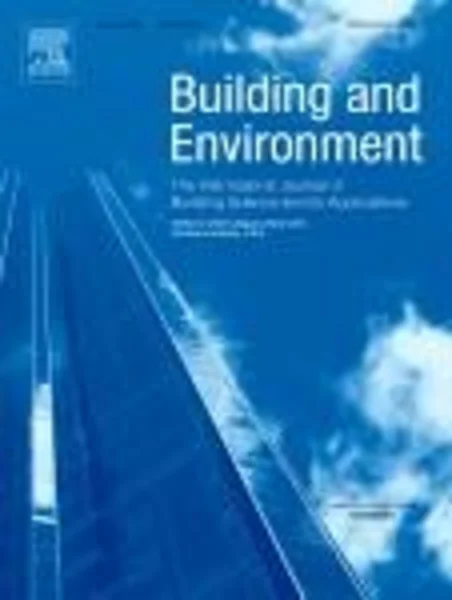-
study of the resistances to transfer of gaseous pollutant between material and indoor air
جزئیات بیشتر مقاله- تاریخ ارائه: 1390/01/01
- تاریخ انتشار در تی پی بین: 1390/01/01
- تعداد بازدید: 504
- تعداد پرسش و پاسخ ها: 0
- شماره تماس دبیرخانه رویداد: -
the main parameters which control the emission of volatile organic compounds between wall materials and indoor air were examined. a physically based model considers that the global emission phenomenon results from three elementary physical phenomena: diffusion through the boundary layer separating the wall from environment, diffusion within the porous network of the materials, and sorption of the gas molecules on the active sites of the materials. the pollutant transfer between porous material and air is therefore subjected to two complementary resistances and we identify first the resistance which controls the transfer. then, we predict the global emission time constant from the mass transfer coefficient of convection and the thickness of the material. experimental results from a small scale chamber are compared to predicted values in the case of acetone emission from chipboard in humid air and for high initial acetone concentration. good agreement is obtained at the beginning of emission but an acetone retention effect by chipboard is observed, showing that it will be necessary to take into account the interactions of water vapor with materials and the pollutants to achieve accurate modeling of the material voc emission process.
مقالات جدیدترین رویدادها
-
استفاده از تحلیل اهمیت-عملکرد در ارائه الگوی مدیریت خلاقیت سازمانی و ارائه راهکار جهت بهبود
-
بررسی تاثیر ارزش وجوه نقد مازاد بر ساختار سرمایه شرکت های پذیرفته شده در بورس اوراق بهادار تهران
-
بررسی تأثیر سطح افشای ریسک بر قرارداد بدهی شرکت های پذیرفته شده در بورس اوراق بهادار تهران
-
بررسی تأثیر رتبه بندی اعتباری مبتنی بر مدل امتیاز بازار نوظهور بر نقد شوندگی سهام با تأکید بر خصوصی سازی شرکت ها
-
تأثیر آمیخته بازاریابی پوشاک ایرانی بر تصویر ذهنی مشتری پوشاک ایرانی (هاکوپیان)
-
بازاریابی حسی: رویکرد نوین در صنعت بازاریابی
-
using jointly distributed random variables method to determination of saturated sand liquefaction reliability
-
ارائه مدل شبیه سازی برای بهینه سازی گردش مدارک کنترل پروژه
-
میوفیبروبلاستومای عقده لنفاوی در بازوی پسر بچه 13 ساله ”گزارش یک مورد“
-
برآورد بارمالی حوادث منجر به فوت در پروژه های ساختمانی شهر تهران در سال آتی
مقالات جدیدترین ژورنال ها
-
مدیریت و بررسی افسردگی دانش آموزان دختر مقطع متوسطه دوم در دروان کرونا در شهرستان دزفول
-
مدیریت و بررسی خرد سیاسی در اندیشه ی فردوسی در ادب ایران
-
واکاوی و مدیریت توصیفی قلمدان(جاکلیدی)ضریح در موزه آستان قدس رضوی
-
بررسی تاثیر خلاقیت، دانش و انگیزه کارکنان بر پیشنهادات نوآورانه کارکنان ( مورد مطالعه: هتل های 3 و 4 ستاره استان کرمان)
-
بررسی تاثیر کیفیت سیستم های اطلاعاتی بر تصمیم گیری موفق در شرکتهای تولیدی استان اصفهان (مورد مطالعه: مدیران شرکتهای تولیدی استان اصفهان)
-
تحلیل حکم حکومتی در فقه سیاسی
-
پنهان کاری در انتقال داده های پزشکی ایمن برای سیستم های مراقبت بهداشتی مبتنی بر iot
-
ارتباط کوته بینی مدیران با نوسانات سود و سهامداران عمده در شرکت های پذیرفته شده در بورس اوراق بهادار تهران
-
ارائه الگوی مدیریت استعداد در نهاجا
-
utilization of palm oil fuel ash and eggshell powder as partial cement replacement - a review




سوال خود را در مورد این مقاله مطرح نمایید :